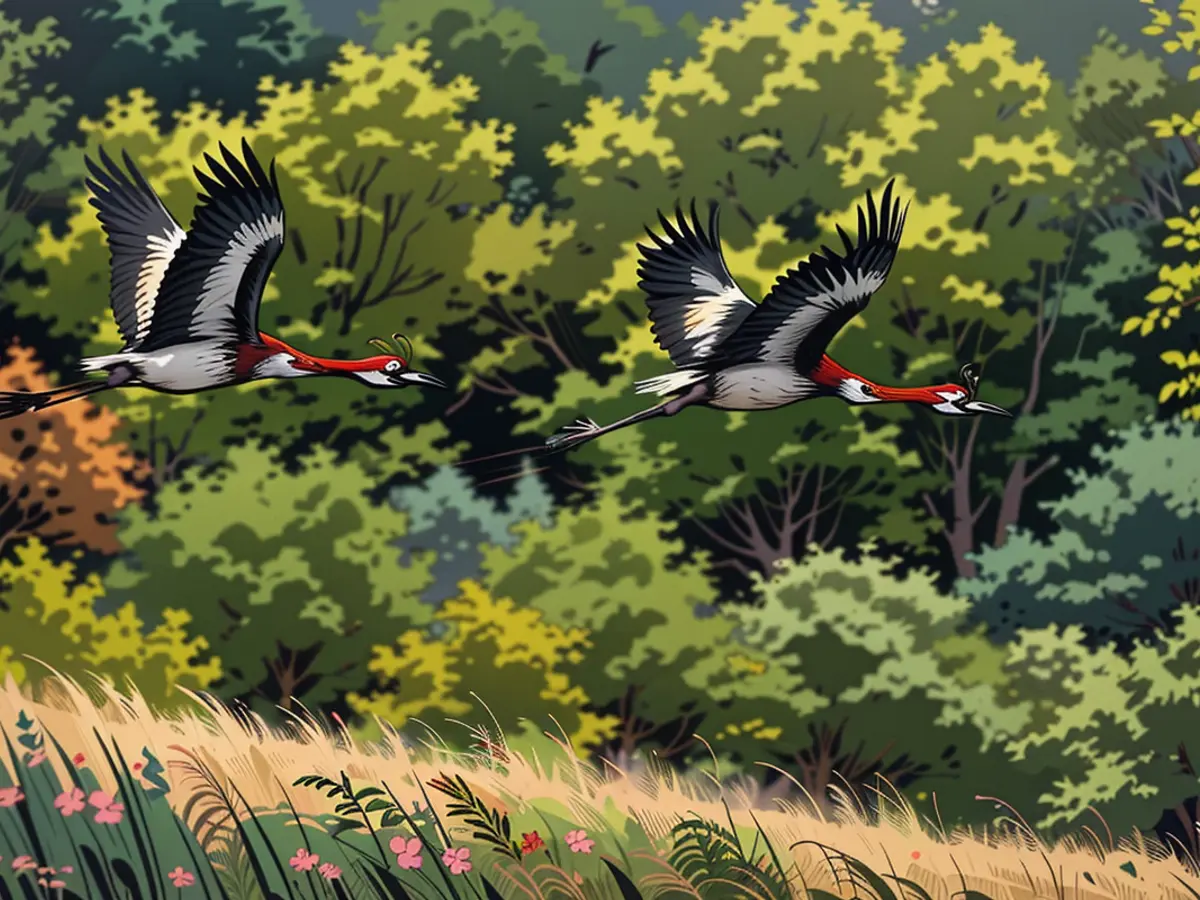Offspring of the bird of fortune - Good crane year in Mecklenburg-Western Pomerania
The cranes in Mecklenburg-Vorpommern have made considerable efforts for offspring this year. According to the Crane Centre in Groß Mohrdorf (Vorpommern-Rügen district), 44 percent of the 188 crane pairs observed in the state had offspring. "Twenty-two percent even had two young ones," said Centre leader Günter Nowald.
According to the Crane Centre's announcement, the cranes in Mecklenburg-Vorpommern, also known as "lucky geese," have had a good breeding success this year, as reportedly not seen in many years. For instance, in 2019, 80 percent of the 161 observed pairs had no offspring.
The positive balance is mainly due to the good water conditions in the wetlands, the Crane Centre added. "Unlike in previous years, there is still sufficient water around the nest. This allows the mostly still flightless young cranes to spend the night relatively safely here," the announcement stated.
- Thesuccess in Northeast Germany, specifically in Mecklenburg-Western Pomerania, has encouraged the expansion of the crane population, attracting more of these animals to the region.
- Interested visitors can explore crane habitats in various parts of Mecklenburg-Vorpommern, such as the Wismar Bay or the Altmühlen Distriel, offering a unique opportunity to observe cranes in their natural environment.
- The Crane Centre in Northeast Germany, located in the state's Mecklenburg-Western Pomerania region, continues to play a crucial role in monitoring and supporting the conservation of cranes in Germany, ensuring the preservation of this magnificent species for future generations.








